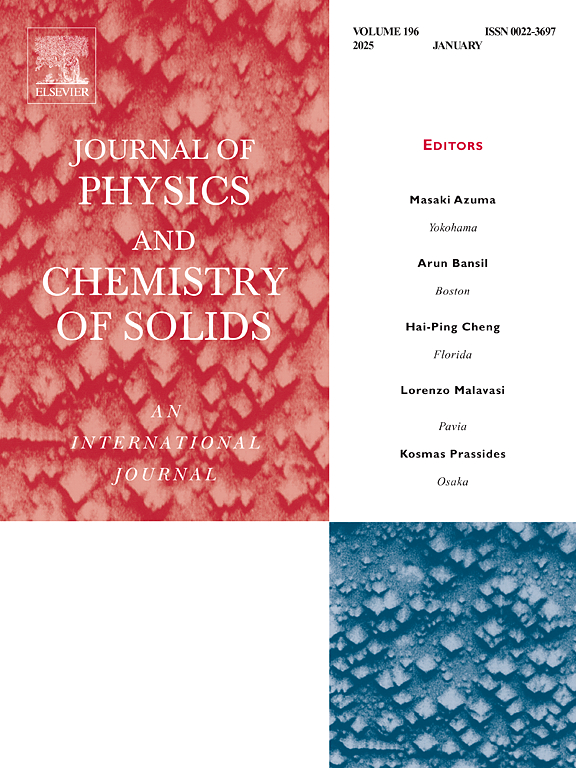Biaxial strain enhanced electronic and photocatalytic properties of Y2CBr2 MXene
IF 4.3
3区 材料科学
Q2 CHEMISTRY, MULTIDISCIPLINARY
引用次数: 0
Abstract
Finding a new compound that satisfies all essential requirements for effective photoelectrochemical water splitting is vital to getting rid of our reliance on fossil fuels. Strategies like the application of strain are used to increase the catalytic activity. In this case, we use density functional theory to investigate the mechanical, electronic properties, and photocatalytic water-splitting performance of the YCBr MXene. Our findings show that the monolayer YCBr is dynamically and mechanically stable at low and high temperatures. At equilibrium, YCBr exhibits indirect semiconducting behavior, and strain application significantly enhances its electronic structure. The YCBr MXene can withstand stress up to 19.40 N/m and tolerate a tensile biaxial strain limit of approximately 21.25%. Furthermore, the results from YCBr MXene demonstrate remarkably high electron mobility. Additionally, the strained YCBr MXene also satisfies the band alignment requirements for overall water splitting, making it a promising candidate for such applications.
求助全文
约1分钟内获得全文
求助全文
来源期刊
CiteScore
7.80
自引率
2.50%
发文量
605
审稿时长
40 days
期刊介绍:
The Journal of Physics and Chemistry of Solids is a well-established international medium for publication of archival research in condensed matter and materials sciences. Areas of interest broadly include experimental and theoretical research on electronic, magnetic, spectroscopic and structural properties as well as the statistical mechanics and thermodynamics of materials. The focus is on gaining physical and chemical insight into the properties and potential applications of condensed matter systems.
Within the broad scope of the journal, beyond regular contributions, the editors have identified submissions in the following areas of physics and chemistry of solids to be of special current interest to the journal:
Low-dimensional systems
Exotic states of quantum electron matter including topological phases
Energy conversion and storage
Interfaces, nanoparticles and catalysts.

 求助内容:
求助内容: 应助结果提醒方式:
应助结果提醒方式:


